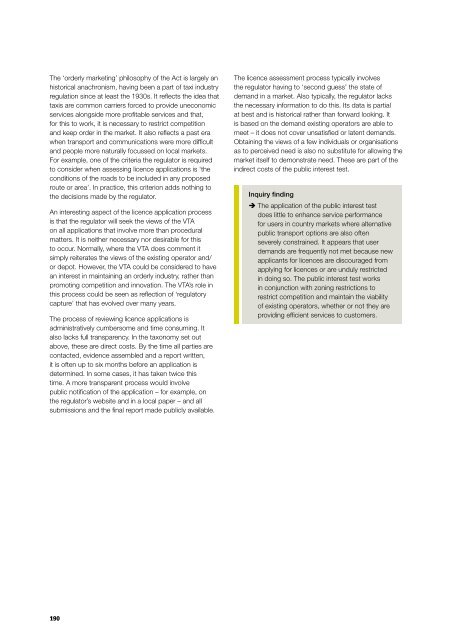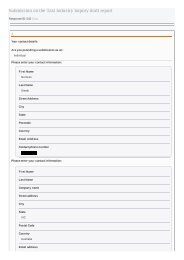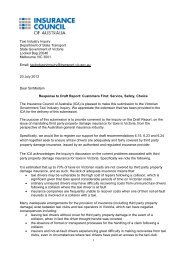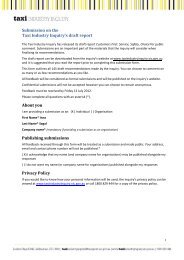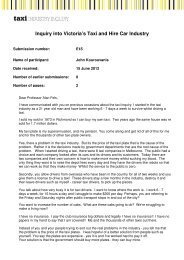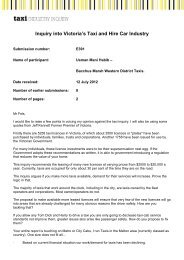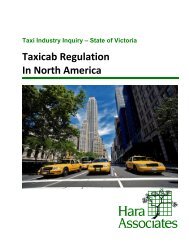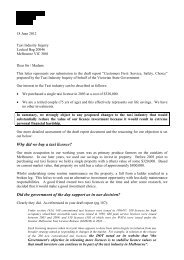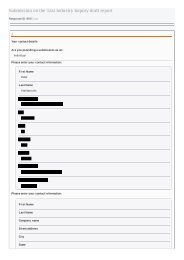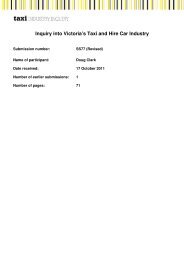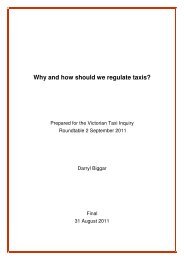Part D â Understanding and improving industry performance (PDF ...
Part D â Understanding and improving industry performance (PDF ...
Part D â Understanding and improving industry performance (PDF ...
You also want an ePaper? Increase the reach of your titles
YUMPU automatically turns print PDFs into web optimized ePapers that Google loves.
The ‘orderly marketing’ philosophy of the Act is largely an<br />
historical anachronism, having been a part of taxi <strong>industry</strong><br />
regulation since at least the 1930s. It reflects the idea that<br />
taxis are common carriers forced to provide uneconomic<br />
services alongside more profitable services <strong>and</strong> that,<br />
for this to work, it is necessary to restrict competition<br />
<strong>and</strong> keep order in the market. It also reflects a past era<br />
when transport <strong>and</strong> communications were more difficult<br />
<strong>and</strong> people more naturally focussed on local markets.<br />
For example, one of the criteria the regulator is required<br />
to consider when assessing licence applications is ‘the<br />
conditions of the roads to be included in any proposed<br />
route or area’. In practice, this criterion adds nothing to<br />
the decisions made by the regulator.<br />
An interesting aspect of the licence application process<br />
is that the regulator will seek the views of the VTA<br />
on all applications that involve more than procedural<br />
matters. It is neither necessary nor desirable for this<br />
to occur. Normally, where the VTA does comment it<br />
simply reiterates the views of the existing operator <strong>and</strong>/<br />
or depot. However, the VTA could be considered to have<br />
an interest in maintaining an orderly <strong>industry</strong>, rather than<br />
promoting competition <strong>and</strong> innovation. The VTA’s role in<br />
this process could be seen as reflection of ‘regulatory<br />
capture’ that has evolved over many years.<br />
The process of reviewing licence applications is<br />
administratively cumbersome <strong>and</strong> time consuming. It<br />
also lacks full transparency. In the taxonomy set out<br />
above, these are direct costs. By the time all parties are<br />
contacted, evidence assembled <strong>and</strong> a report written,<br />
it is often up to six months before an application is<br />
determined. In some cases, it has taken twice this<br />
time. A more transparent process would involve<br />
public notification of the application – for example, on<br />
the regulator’s website <strong>and</strong> in a local paper – <strong>and</strong> all<br />
submissions <strong>and</strong> the final report made publicly available.<br />
The licence assessment process typically involves<br />
the regulator having to ‘second guess’ the state of<br />
dem<strong>and</strong> in a market. Also typically, the regulator lacks<br />
the necessary information to do this. Its data is partial<br />
at best <strong>and</strong> is historical rather than forward looking. It<br />
is based on the dem<strong>and</strong> existing operators are able to<br />
meet – it does not cover unsatisfied or latent dem<strong>and</strong>s.<br />
Obtaining the views of a few individuals or organisations<br />
as to perceived need is also no substitute for allowing the<br />
market itself to demonstrate need. These are part of the<br />
indirect costs of the public interest test.<br />
Inquiry finding<br />
è The application of the public interest test<br />
does little to enhance service <strong>performance</strong><br />
for users in country markets where alternative<br />
public transport options are also often<br />
severely constrained. It appears that user<br />
dem<strong>and</strong>s are frequently not met because new<br />
applicants for licences are discouraged from<br />
applying for licences or are unduly restricted<br />
in doing so. The public interest test works<br />
in conjunction with zoning restrictions to<br />
restrict competition <strong>and</strong> maintain the viability<br />
of existing operators, whether or not they are<br />
providing efficient services to customers.<br />
190


